Table of contents
The kitchen is one of the most important rooms in the house, since it is the place where food is prepared and stored. Therefore, a good cleaning becomes fundamental to avoid the accumulation of dirt and impurities that can generate serious health problems. In the case of the refrigerator, the attention must be doubled, because if it is not cleaned frequently and in the correct way, it can cause a lot of problems.disorder.
Milk that has spilled, broth that has spilled, food that has been exposed without protection or stored past its expiration date all contribute to making the refrigerator dirty and smelly, and can also end up contaminating the food with germs, bacteria and fungi, thus increasing the danger of food poisoning. The risk becomes even greater with raw meat, which canspread very dangerous bacteria.
For this reason, it is important to know which are the right products to clean the refrigerator, since no one wants to taste and smell chemicals in their food - not to mention that they can also infect the food.Check below a step by step guide, the explanations and tips from the personal organizers Weridiana Alves and Tatiana Melo, and learn how to clean this appliance in a correct and practical way.
How to clean the refrigerator step by step
As Weridiana says: "cleaning the refrigerator is not only important to maintain the hygiene, aesthetics, and conservation of your appliance, but also to prevent ice from taking over your refrigerator, thus increasing the cost of electricity". So, stay tuned and follow now the step by step instructions to properly clean your refrigerator:
Step 1: Turn off the refrigerator and remove all food

First of all, it is necessary to turn off the refrigerator to avoid the risk of accidents during cleaning. With it turned off, remove all the food from its interior and take the opportunity to throw out everything that is past its expiration date.Here, a good tip is to use a Styrofoam box with ice to put all those foods that require greater refrigeration. This way, you avoid them being exposed to room temperature and spoil.
In addition, Tatiana also makes a recommendation for before cleaning: "if your refrigerator is not Frost Free Weridiana adds that "it is important to wait at least an hour, if the day is very hot, and up to three hours on colder days, for the total cleaning of the refrigerator and freezer. Thus, without the presence of ice, cleaning will occur more quickly and accurately, avoiding damage to the refrigerator.
Step 2: Remove shelves and drawers to clean
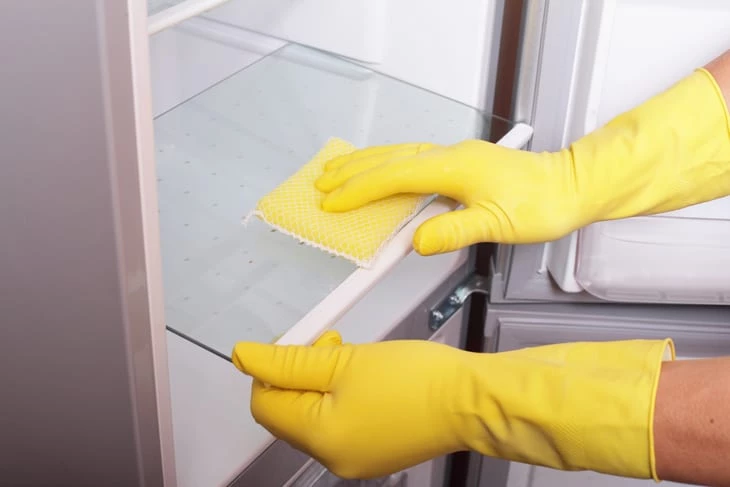
Start by cleaning shelves, drawers, egg holders and other removable surfaces in general. Take them out of the refrigerator and wash them well with water and detergent in the sink.So use cold water or remove the shelf and leave it at room temperature for a while before you start washing.
Step 3: Clean the inside of the refrigerator
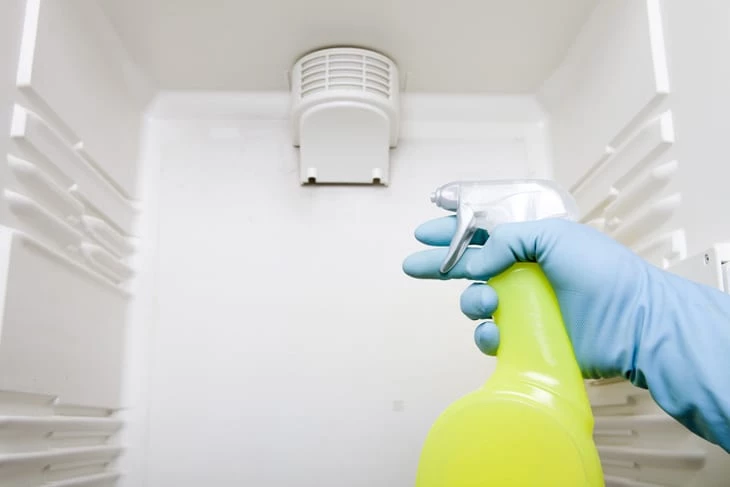
Now, it is time to clean the inside of the appliance. In this part, it is good to avoid using soap and detergent, because the food can absorb the smell. "The inside walls of the refrigerator and freezer should also be cleaned after all the ice has been removed. Wipe with a cloth dampened in clean water, with a few spoonfuls of vinegar, which helps remove unpleasant smells and at the same timeThe professional also recommends cleaning the rubber door: "wash it with detergent, dry it well, and put it back in place.
Step 4: Let the refrigerator dry thoroughly before switching it back on

But Weridiana reminds us of an important detail: "don't forget to turn the knob to the temperature that is best for the perfect functioning of your refrigerator.
How to clean the freezer
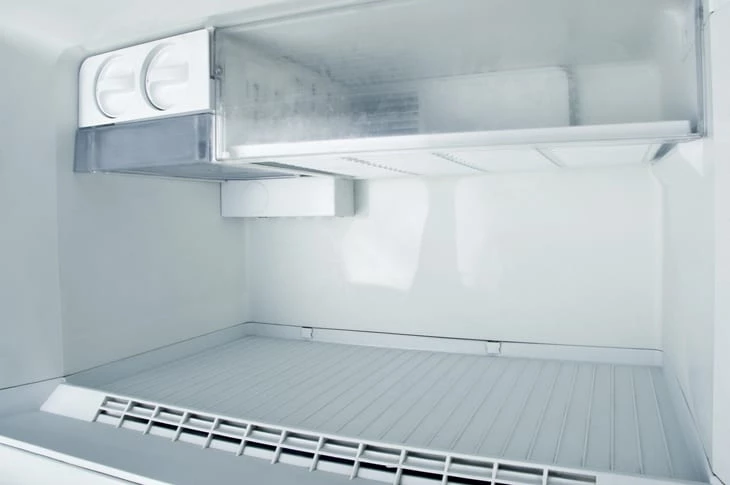 To clean the freezer, obviously, it needs to be empty and defrosted, but Tatiana also warns us about the importance of following the manufacturer's guidelines before starting any cleaning process. Another tip for before starting is to check if the freezer also has removable surfaces. If it does, just do the same as the refrigerator: remove themand wash them in the sink with water and detergent.
To clean the freezer, obviously, it needs to be empty and defrosted, but Tatiana also warns us about the importance of following the manufacturer's guidelines before starting any cleaning process. Another tip for before starting is to check if the freezer also has removable surfaces. If it does, just do the same as the refrigerator: remove themand wash them in the sink with water and detergent.
For model refrigerators Frost Free, Weridiana explains that there is no need to clean the freezer, because the ice is dry and usually has a very thin layer, which prevents the accumulation of ice and dirt. However, she says that in the vast majority of homes is still used the refrigerator with freezer, which implies the need for defrosting, which is very important to increase the life of the appliance and for a betterfood preservation.
Thus, Weridiana guides how to do the defrosting process: "after removing all the food, turn the refrigerator to OFF and unplug it. In principle, it is in the catch tray that most of the melted ice will be left, but even so, some water may drip onto the floor. If there is a lot of dense ice, you will have to wait longer for it to melt, or you canThe professional also recommends placing several cloths in front of the refrigerator door, which should remain open to speed up the process.thawing, thus preventing the floor from getting soaked.
After defrosting, Tatiana teaches how the cleaning process should be done: "in general, the cleaning can be done with a damp cloth and water with vinegar. It is a great tip to remove odor and keep the freezer clean."
How to clean the freezer
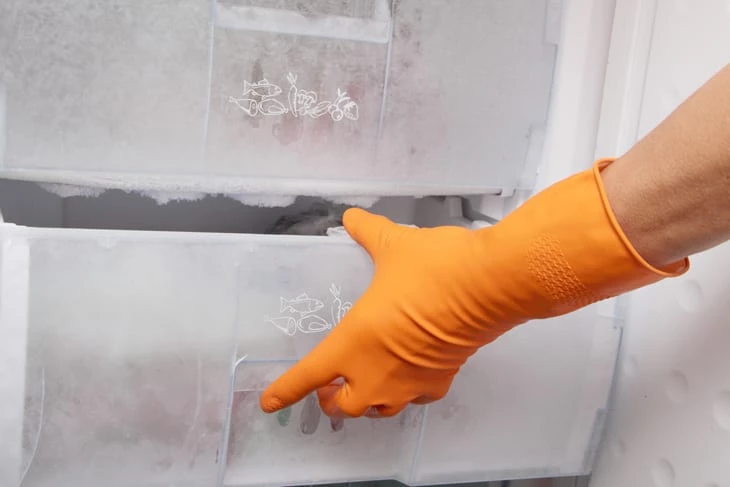
Cleaning the freezer does not differ much from the refrigerator and the freezer, having only a few specific characteristics. Before cleaning, leave the appliance turned off for a longer time than the refrigerator, this will facilitate the removal of ice crusts, which tend to be larger than those in the freezer. Wait for all ice to melt and remove the water that formed from the defrost. Remembering that the freezercan be defrosted every 6 months.
Try to do the cleaning on a day that your appliance is not too full, to prevent the stored food from spoiling, since everything that is in the freezer needs greater refrigeration. If this is not possible, it is extremely important that the food is placed in a Styrofoam box with some ice, as previously instructed, or put it inside a freezer compartment.thermal bag and take it to the refrigerator.
Start by taking everything out of the freezer and throw away any food that is past its expiration date. Even if frozen, if the food is in there for too long it can be risky for consumption. The cleaning process is the same as for the refrigerator: dampen a cloth in vinegar water and wipe inside the entire freezer. To remove all food residue, clean the lid and grooves as well. RemoveAlso all trays, shelves and ice trays and wash them with detergent. To dry, wipe them with a flannel and remember to clean all items that are going back into the freezer.
How to clean the outside
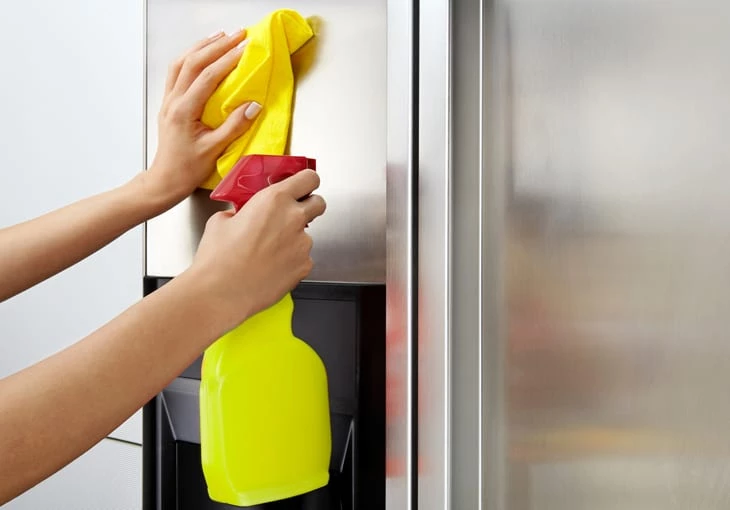
To clean the outside of the refrigerator, the first thing is to pay attention to the material it is made of. "Check the material of your refrigerator. For example, stainless steel refrigerators require greater attention. Be careful when using cleaning products, as they can cause stains according to their composition. Opt for a damp cloth and clean water with neutral detergent. In common refrigerators, you can use asmooth brush, which will not cause damage to the material or scratch the refrigerator," explains Tatiana.
Weridiana also recommends a damp cloth and neutral detergent or a sponge with a soft side. She also adds: "after applying the neutral detergent, remove the excess with a clean damp cloth. Another interesting tip is to use a handkerchief or an antibacterial spray on the refrigerator door handle, because it is one of the places with the highest concentration of germs in the kitchen.
The back of the refrigerator should also be cleaned with a duster or damp cloth to remove excess dust, which usually accumulates in this area," says Weridiana.
The function of the condenser and the propeller is to release heat into the environment, so if the coils become covered with dust, hair and debris, this heat is not properly released, requiring the compressor to work much harder to keep the refrigerator cool. Therefore, clean the coils every six months toAt this stage, it is essential to unplug the device and it is forbidden to use water or detergent during cleaning.
An important piece of information is that the position of the coils varies from model to model, so if in doubt about the location of the condenser, read the instruction manual.
And attention to one more guideline: "some refrigerator models have a tray behind the equipment, below the engine, which retains the excess water from ice production. It is important to remove this tray and wash it too", Weridiana reinforces. A good tip is also to put a little bit of sanitary water to avoid the proliferation of dengue mosquitoes.
When to clean
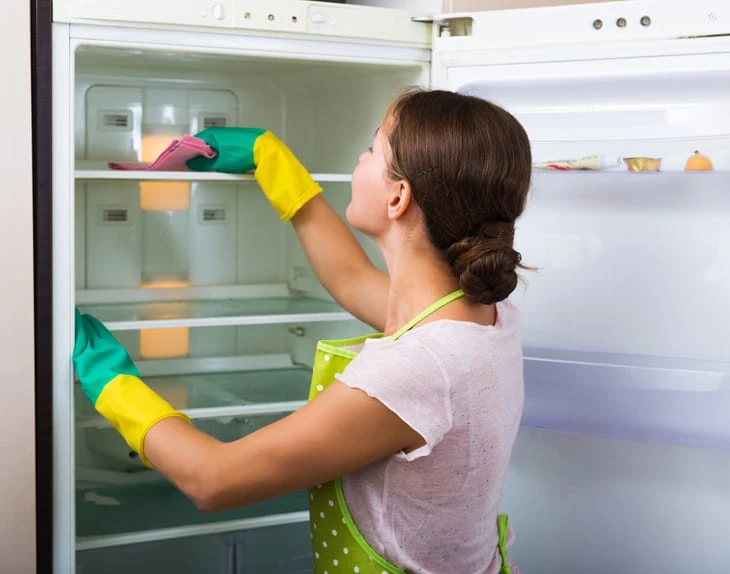
According to Weridiana, the best time to defrost and clean the refrigerator is when it's as empty as possible: "Before the purchase of the month, when you see very few things inside, is the best time to put your hands to work. If you have food in the freezer, it's best to use it all up before planning to clean your refrigerator," explains the professional.
Tatiana comments on how often the internal cleaning should be done: "everything depends on how often the family buys and how the refrigerator is used. It is recommended at least once every 15 days, but if it is a small family or a single person, it can be done once a month.
Another option is also to make a cleaning plan with different tasks for each periodicity. Here is a suggestion:
To do every day: During everyday tasks in the kitchen, take a few minutes to check the refrigerator for spills and debris. It is easier to clean up spills and debris while they are still fresh.
To do once a week: Organize all the items in your refrigerator and throw away any food that is spoiled or expired. If something is still within its expiration date but you have no plans to use it, you can donate it to the neighbors or to someone who needs it, thus avoiding waste.
To do once a month: Do the complete cleaning as already instructed.
Here is a list to help you know how long some foods will last in the refrigerator, if it is at the right temperature:
- Vegetables and fruits: 3 to 6 days
See_also: How to make clay in 4 super creative tutorials- Green leaves: 3 to 4 days
- Milk: 4 days
- Eggs: 20 days
- Cold: 3 days
- Soups: 2 days
- Cooked meats: 3 to 4 days
- Guts and ground meat: 2 to 3 days
- Sauces: 15 to 20 days
- Food leftovers in general (rice, beans, meat and vegetables): 1 to 2 days
How to keep the refrigerator clean longer
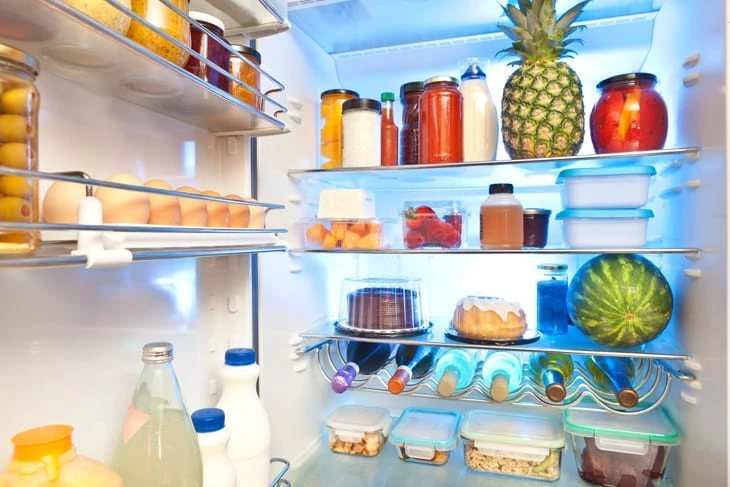
Keeping the refrigerator always clean is the best way to avoid suffering from heavy cleaning and too big accumulations of dirt. To achieve this, Tatiana suggests: "Make smaller purchases, avoid excesses, always opt for what is necessary, and keep track of everything you have.
In addition, here are a few more tips to help you keep your refrigerator clean longer:
- Reduce the risk of food contamination by keeping meats in general well-packed, so that fluids do not drip onto the bottom shelves.
- Do not allow food to mold in the refrigerator, as mold spreads quickly to other foods.
- Put the ingredients away right after you use them. Once opened, most condiments and foods should be kept in the refrigerator, not in the cupboard.
- As already stated, clean up the waste as soon as possible, while it is still fresh. This will make removal easier and keep the food storage places clean.
- To prevent odors, always keep the food stored in closed containers or sealed with plastic wrap. Never leave food open and exposed, they leave odors in the refrigerator and other foods modifying the flavor when preparing it.
Weridiana also recommends washing and sanitizing food and packaging whenever you store them in the refrigerator, such as eggs, for example: "It is important to wash them individually with the smoothest part of the sponge with liquid detergent, then dry them and put them in the refrigerator. Remembering that the door is not the ideal place for storing eggs, because the constant movements and the oscillation of thetemperature when opening and closing the doors does not guarantee their conservation and durability", he explains.
Speaking of food hygiene, Tatiana teaches special guidelines for greens, fruits and vegetables: "Separate and select the damaged leafy vegetables. Wash in running, clean water each leaf or vegetable individually by hand to remove visible impurities. Soak in water with a chlorine solution for 15 to 30 minutes (solution sold in supermarkets and pharmacies). You must follow theThe manufacturer's dilution process, which is usually 10 drops for every 1L of water; or also a shallow soup spoon of bleach for 1L of water. Rinse in running, drinkable water. The fruits, on the other hand, should be washed with a soft sponge in the same solution, noting that you should never use detergent or soap for them".
Quick Tips for Organizing

The first step in organizing the refrigerator without error is to think about the frequency of the family's purchases and the items that are usually stored in this area.Therefore, stay tuned to the professional's tips to leave everything in the right place", explains Tatiana.
When organizing the refrigerator, don't forget:
- Make smart purchases;
- Remove everything and perform the cleaning;
- Start with the top shelf;
- Check the expiration date and quality of the products;
- Store all leftover food in suitable containers;
- Fruits only go into the refrigerator after they are ripe;
- Store fresh leaves and vegetables in the bottom drawer in baggies;
- In the freezer, keep meats and frozen foods, and in the cold drawer at the bottom, store meats that don't need to be frozen.
- On the top shelf, store foods that need more refrigeration, such as milk, yogurt, eggs, cheese, and leftovers;
- As for the vegetables, sanitize well and dry them before storing, and keep them in the bottom drawer in plastic bags to preserve them longer.
- To make it easier to see the food, choose to invest in transparent jars or create a sectorization inside the refrigerator with specific organizers.
It is forbidden!
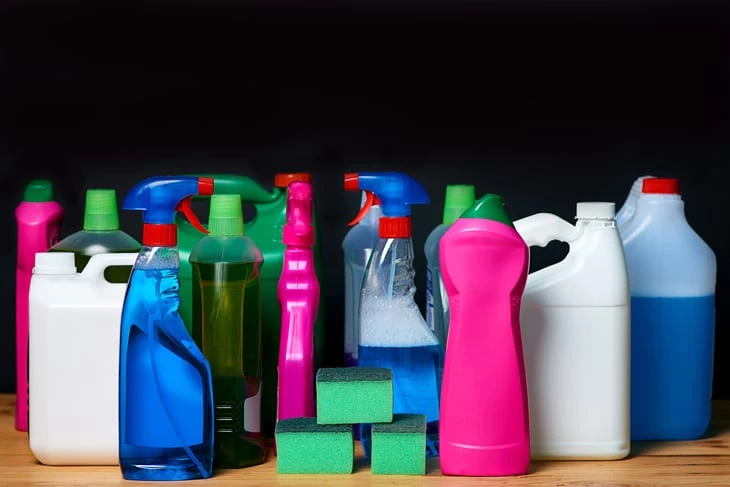
It is very important to know exactly what products we can and cannot use when cleaning the refrigerator, since we are dealing with food and the useful life of the appliance. Tatiana recommends avoiding using chemical products without first consulting the manufacturer's guidelines and, furthermore, she adds: "never use steel sponges, rough cloths, products that contain ammonia, alcohol andabrasive substances to your refrigerator. Also avoid multi-purpose cleaner that has a very strong smell."
See_also: 10 American barbecue grill models for you to guarantee yoursWeridiana recommends: "the use of chlorine bleach is not recommended, because it can remove the painting of the refrigerator, as well as leave it with a yellowish aspect over time. The use of pure baking soda should not be used, because besides being abrasive, its roughness scratches and damages the painting and protection both inside and outside the refrigerator".
As has also been said, it is important to avoid using knives and sharp objects to remove ice and dirt crusts from any part of the refrigerator.
Homemade tricks
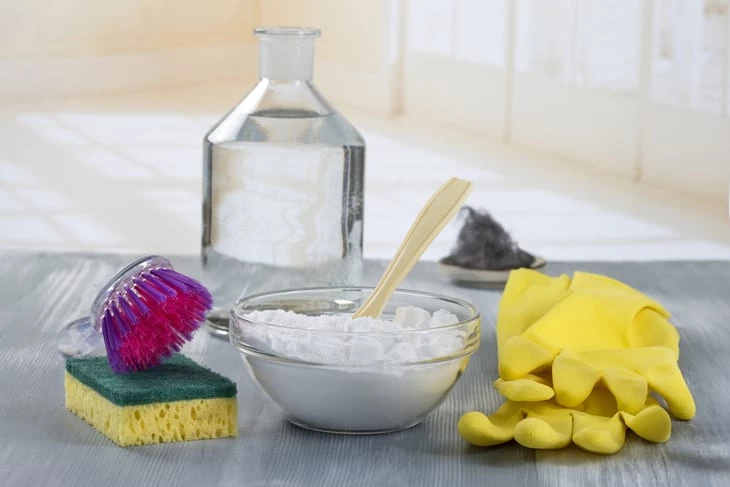
Homemade recipes are excellent for cleaning the refrigerator, since the use of industrialized chemical products is not recommended for this type of cleaning. For the inside area of the refrigerator, Weridiana indicates: "The solution with 500ml of warm water and 2 tablespoons of vinegar is a good cleaning trick, because besides disinfecting, it eliminates the unpleasant odors that refrigerators normallypresent."
Tatiana teaches another homemade trick to remove stains from refrigerator shelves and drawers: "you can make a mixture with water and baking soda, one spoon of baking soda in a liter of warm water. The mixture acts as a degreaser and removes all dirt effortlessly. This mixture can be used for removable parts and also for the inside of the refrigerator,making it even whiter.
To finish, the professional gives one more tip, now to eliminate odors: "put a spoonful of coffee in a cup and leave it in the refrigerator or use a piece of charcoal. They absorb all the unpleasant odor. There! Clean and organized refrigerator!"
If you follow these step by step instructions and the recommendations of the professionals, the days of cleaning the refrigerator will no longer be a pain, and you will be able to perform this task in a more practical and quicker way.



